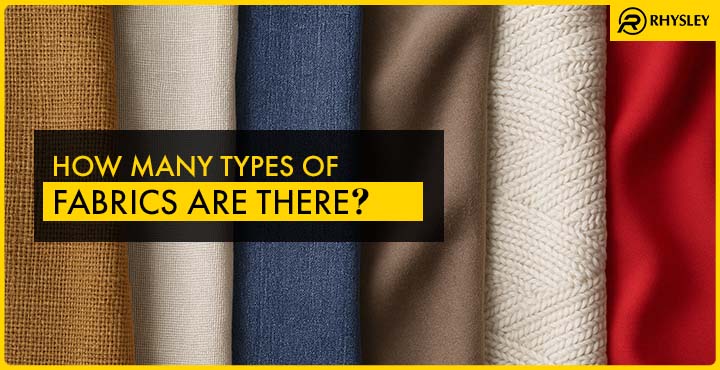
How Many Types of Fabrics Are There?
Understanding fabrics helps with smarter clothing choices. Clothes feel different for a reason—fabric plays a big part. Some fabrics breathe better. Others stretch more. Some stay cool in heat. Others trap warmth in cold weather. Knowing how fabrics work makes it easier to pick the right one for any purpose.
Fabrics come in two main types: natural and synthetic. Natural ones come from plants or animals. Synthetic ones come from chemicals made by people. Each type works well for some things and
less well for others.
Natural vs Synthetic Fabric Comparison
Natural fabrics grow from nature. Cotton grows on plants. Wool comes from sheep. Silk comes from silkworms. Linen comes from flax plants. These are made by harvesting, cleaning, and
spinning the fibers into thread.
Synthetic fabrics are made in labs. Polyester, nylon, rayon, and acrylic come from petroleum-based chemicals. These are melted and spun into threads before weaving.
Natural fabrics feel soft and allow air to pass through. Many people with sensitive skin prefer them. They break down over time, which is better for the planet. But they may shrink in wash or wear out faster.
Synthetic fabrics resist wrinkles, stretch better, and last longer. They are often cheaper. Still, they may trap heat and don’t always feel as soft. Some can irritate skin or hold odors longer.
This natural vs synthetic fabric comparison gives a simple way to weigh comfort against durability.
Common Natural Fabrics Used in Clothing
Cotton is one of the most popular types of natural fabrics for clothing. It feels soft, stays cool, and is easy to wash. It suits warm weather but may wrinkle easily.
Linen feels light and lets skin breathe. It’s great for summer but can crease quickly. Silk is smooth and shiny. It holds color well and looks elegant. It feels cool to touch but can stain easily.
Wool keeps warmth in and fits colder weather. It resists odors and stays dry longer than many other fabrics. These are common fabrics used in clothing made from natural sources. Each serves a different need based on season, comfort, or style.
Popular Synthetic Fabrics in Modern Apparel
Polyester holds shape and dries quickly. It doesn’t wrinkle and lasts a long time. Nylon is strong and stretchy. It’s used in sportswear and swimwear. Rayon feels like silk or cotton but
is made from wood pulp using chemical treatment. Acrylic is warm and often used in sweaters or blankets.
These options show the range of synthetic fabric types and their properties. Some imitate the softness of natural materials. Others focus on strength or moisture control.
Read More : What is Pima Cotton Fabric? | What is taslan fabric?
List of Fabric Names and Uses
This list of fabric names and uses gives a quick look at what each fabric can do:
- Chiffon – Light, sheer, used in dresses
- Corduroy – Thick, ribbed, great for jackets
- Denim – Durable, used in jeans
- Flannel – Soft, warm, common in pajamas
- Jersey – Stretchy, used in T-shirts
- Lace – Decorative, often in gowns
- Satin – Smooth, shiny, used for formal clothes
- Taffeta – Crisp, good for party wear
- Velvet – Soft, plush, used in winter wear
- Voile – Light, breathable, used in blouses
To see a wider fabric names list with pictures, public online resources offer large catalogs.
Best Fabrics for Summer Clothing
Clothes that stay cool matter most during hot days. Cotton lets air pass through and soaks up sweat. Linen does this too but dries quicker. Rayon feels light and works in humid climates. Chambray looks like denim but feels much lighter. These are all strong picks when looking for the best fabrics for summer clothing.
FAQs
Question 1 – What are the main types of fabrics?
Answer – Two main types exist. Natural fabrics such as cotton, silk, wool come from plants and animals. Synthetic ones such as polyester, nylon, and rayon come from man-made processes.
Question 2 – What is the difference between natural and synthetic fabrics?
Answer – Natural fabrics come from living sources. They breathe well and break down easier. Synthetic ones are made from chemicals and offer better strength, stretch, and shape-retention.
Question 3 – Which fabric is best for summer clothing?
Answer – Cotton and linen work best in warm weather. They feel light, soak up moisture, and let the skin breathe.